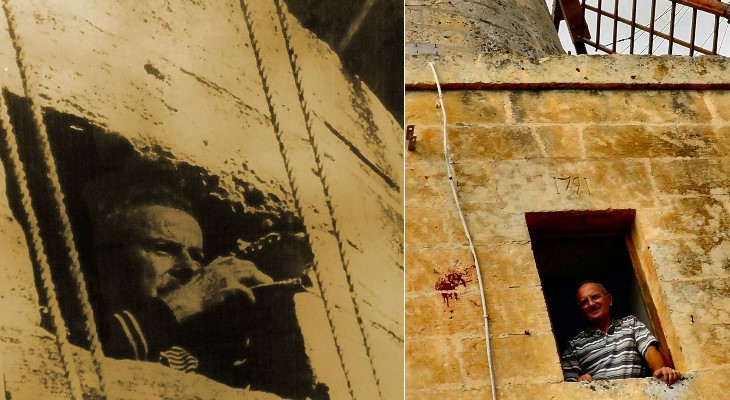Malta once had the highest density of windmills anywhere in the world - one in every 5km - that’s even more than Holland!
Think of windmills and you immediately think of Holland. But there was a time, in the not too distant past, when Malta had more windmills per capita than the Netherlands, with each one visible from the other. Machinery has now made the miller’s manual labour obsolete, but the mills remain as a testament to what was once the life line of the country.
You may be wondering where all the mills have gone. They’re still there, some of them, but don’t go looking for any sails. Most of the old mills have now been converted into private residences, and the only remaining feature of their past lives is the distinctive square shape. Many have lost their round tower, which would have supported the mast, and wings, along with which we’ve lost a whole raft of mill-specific vocabulary.
However, there are two windmills which are still in full sail and are open to the public, thus keeping the miller’s tradition alive.
Xarolla windmill
Xarolla windmill in Zurrieq is one of four that used to work in this small village on Malta’s south western coast. It was first constructed in 1724 during the reign of Grandmaster Antonio Manoel de Vilhena, who commissioned five mills around the island. The majority of windmills were built by the Knights of St John between 1663 and 1773, but there is evidence that there was a windmill in Malta already back in 1530.
Every windmill was within sight of its neighbouring mills from the tower, so that the miller could see if others were working or not. This also made the mills’ location critical as a means of communication or defence.
Once the government’s monopoly on windmills ended in 1838, many took it upon themselves to build their own, but by 1900, most mills were already relics as steam driven mills took over.
The Xarolla windmill was the last one still in use in Malta, and was still grinding grain up till 1940. The last miller there was Gian Battista Sammut, and today, his grandson George Sammut runs tours in the mill to keep his family’s and the country’s cultural heritage going. And yes - the windmill is still fully functional today, almost 300 years after it was first built!
“I was born in the mill and used to sleep in that corner there,” says George proudly, as he points to the front room on the first floor of the mill which served as the miller’s residence. George’s mother still lives in a mill in another part of the village, and George himself was the last miller of Tas-Salib windmill. The restoration of Xarolla windmill was very much a family affair, spearheaded by George’s son Emanuel, and today George spends his weekends working on a voluntary basis to show visitors around his former family business.

Xarolla Windmill - On right, George Sammut looking out of the window at the top of the tower from which his father Emanuel (left) used to blow the conch shell
“The miller would blow on a conch shell in the morning to announce the start of production for the day, and he would blow once more in the afternoon to let the villagers know the flour was ready for collection,” explains George, as we admire his grandfather’s conch shell on display at the mill. His great-grandfather’s conch will be used in an exhibition of traditional Maltese musical instruments to be held later this year.
The modest residential unit on the first floor of Xarolla was built 67 years after the ground floor. The kitchen displays a range of cooking stoves from the stone fuklar, which George’s grandmother would use to fuel the stove which could fit only one pot. A cane cage hanging in the top corner of the kitchen was used to store and dry homemade cheeselets, a kind of primitive refrigerator of sorts. The miller’s wife would keep her loom in one of the rooms to supplement the family income, especially when the weather was not favourable for the windmill to operate.

Adriana Bishop - George Sammut explains the various types of cooking stoves used over the years in the windmill
But the real star of the place is, of course, the mill mechanism, which still incorporates the original grinding stones and parts of the original wooden machinery. The steep climb up 50 circular steps to the top of the 15 metre high tower must have kept the miller quite fit!
Deriving its name from Ix-Xaghra L-gholja in reference to its hilltop location, the Xarolla windmill was built on top of ancient catacombs and happens to be situated on the axis of one of the oldest roads known to Malta, linking Roman settlements in Zurrieq to the Northwest and South of the island.
Ta' Kola windmill
Also built during Grand Master de Vilhena’s time, Ta’ Kola windmill in Xaghra, Gozo is one of just a handful of windmills on the sister island, and the only one in Gozo left in functioning order. The name refers to the nickname of its last miller, Guzeppi Grech who was popularly known as Zeppu ta’ Kola (Joseph, the son of Nikola). The mill houses the largest collection of milling tools, some of which were made by Zeppu himself.
Opening hours
Xarolla Windmill: open Saturdays and Sundays 9am to 12pm. Weekday visits can be arranged via prior appointment with Zurrieq Local Council, T: 00356 2168 9111
Ta’ Kola Windmill: open Monday to Sunday 9am to 5pm